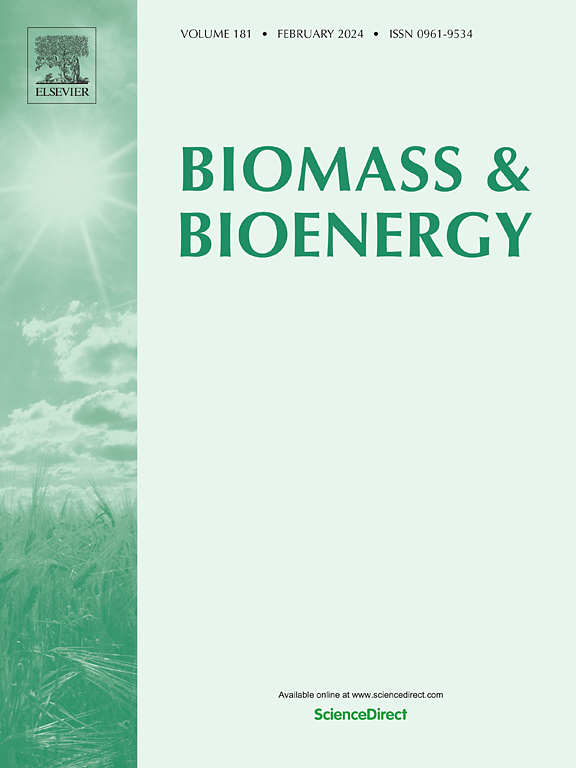Maximizing energy recovery from food waste through integrated microalgae harvest using lipid-rich particles followed by anaerobic digestion of biomass residues
IF 5.8
2区 生物学
Q1 AGRICULTURAL ENGINEERING
引用次数: 0
Abstract
The present study evaluated the potential of algae-based integrated food waste biorefinery to produce valuable bio-based compounds. Lipid-rich particles (FW-LRP) were applied for microalgae harvest, followed by using the solid fraction of food waste (FW-S) for biogas production. The FW-LRP showed 57.2 % higher lipid content with 73.3 % higher polyunsaturated fatty acid compared to food waste mixture. When used for microalgae harvest, FW-LRP demonstrated 92.7 % harvest efficiency with improved biodiesel quality. The highest biodiesel yield of microalgae harvested by FW-LRP was 21.28 g L−1, showing higher cetane number of 57.49 and lower iodine value of 72.8 g I2 per 100 g oil. Furthermore, co-digestion of microalgal lipid-free residues with FW-S yielded biogas of 407.3 L kg−1 VS (with 70.9 % biomethane proportion). These findings confirm the high potential of food waste valorization in microalgae industry to improve biodiesel characteristics and boost anaerobic digestion processes, presenting a promising outlook for sustainable food waste management strategies.

求助全文
约1分钟内获得全文
求助全文
来源期刊

Biomass & Bioenergy
工程技术-能源与燃料
CiteScore
11.50
自引率
3.30%
发文量
258
审稿时长
60 days
期刊介绍:
Biomass & Bioenergy is an international journal publishing original research papers and short communications, review articles and case studies on biological resources, chemical and biological processes, and biomass products for new renewable sources of energy and materials.
The scope of the journal extends to the environmental, management and economic aspects of biomass and bioenergy.
Key areas covered by the journal:
• Biomass: sources, energy crop production processes, genetic improvements, composition. Please note that research on these biomass subjects must be linked directly to bioenergy generation.
• Biological Residues: residues/rests from agricultural production, forestry and plantations (palm, sugar etc), processing industries, and municipal sources (MSW). Papers on the use of biomass residues through innovative processes/technological novelty and/or consideration of feedstock/system sustainability (or unsustainability) are welcomed. However waste treatment processes and pollution control or mitigation which are only tangentially related to bioenergy are not in the scope of the journal, as they are more suited to publications in the environmental arena. Papers that describe conventional waste streams (ie well described in existing literature) that do not empirically address ''new'' added value from the process are not suitable for submission to the journal.
• Bioenergy Processes: fermentations, thermochemical conversions, liquid and gaseous fuels, and petrochemical substitutes
• Bioenergy Utilization: direct combustion, gasification, electricity production, chemical processes, and by-product remediation
• Biomass and the Environment: carbon cycle, the net energy efficiency of bioenergy systems, assessment of sustainability, and biodiversity issues.
 求助内容:
求助内容: 应助结果提醒方式:
应助结果提醒方式:


